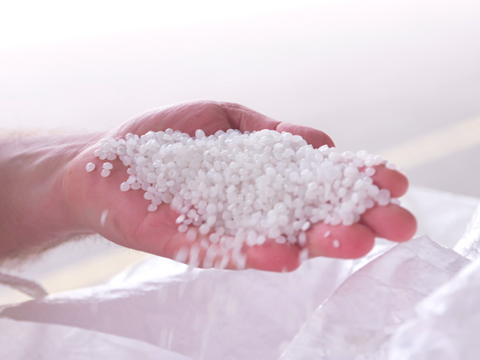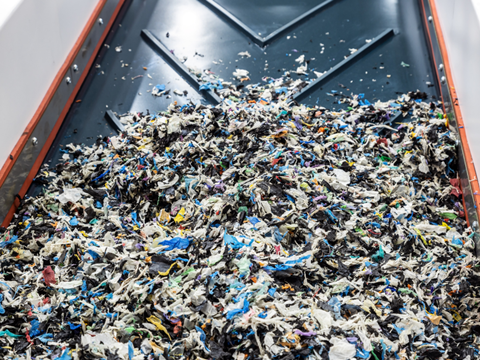
Berry Global’s European Flexibles division has reported a 36% year-on-year increase in the use of post-consumer recycled (PCR) polyethylene (PE) across its industrial, consumer (non-contact sensitive), and agricultural film products.
The company says it has set a goal to use 30% circular plastics across its FMCG packaging products by 2030, aligning with its participation in initiatives such as the Ellen MacArthur Foundation’s circular economy targets.
Berry has incorporated the additional 4,386 tonnes of PCR content into a variety of its flexible film products, including primary packaging applications such as form-fill-seal and heavy-duty sacks used in construction and chemical industries and single wound sheet for horticulture, peat and insulation products.
Apparently, the recycled content is also used in secondary and tertiary packaging such as collation shrink films for the food and beverage sector, as well as stretch wrap and stretch hood pallet protection films for logistics and transportation. Berry has also begun incorporating the recyclate into agricultural stretch wrap, aiming to support sustainable practices across multiple industries.

Berry adds that it has secured RecyClass certification across many of its products to reassure customers of the integrity of its recycled content. The third-party verification provides full traceability of the recycled materials used.
At the end of October, the company collaborated with men’s skincare brand true to launch a refillable deodorant in Poland, estimated to reduce carbon emissions by around 53% compared to single-use deodorant. The refill system consists of a removable 75ml refill pack made of recyclable PP that needs to be replaced approximately every three months.
The following month, Berry launched an ‘easy-squeeze’ ophthalmic 10ml bottle qualified for use with Aptar Pharma’s Ophthalmic Squeeze Dispenser (OSD), a solution used for preservative-free products including eye treatments. The bottle is produced in LDPE in two variants - 10ml hybrid and soft - with the latter said to offer a reduced squeeze force for easier use, designed to provide maximum flexibility to ensure the bottle is suitable for different drug formulations.
If you liked this story, you might also enjoy:
The ultimate guide to the Packaging and Packaging Waste Regulation in 2024
How are the top brands progressing on packaging sustainability?
Sustainable Innovation Report 2024: Current trends and future priorities
Everything you need to know about global plastic sustainability regulation


















No comments yet